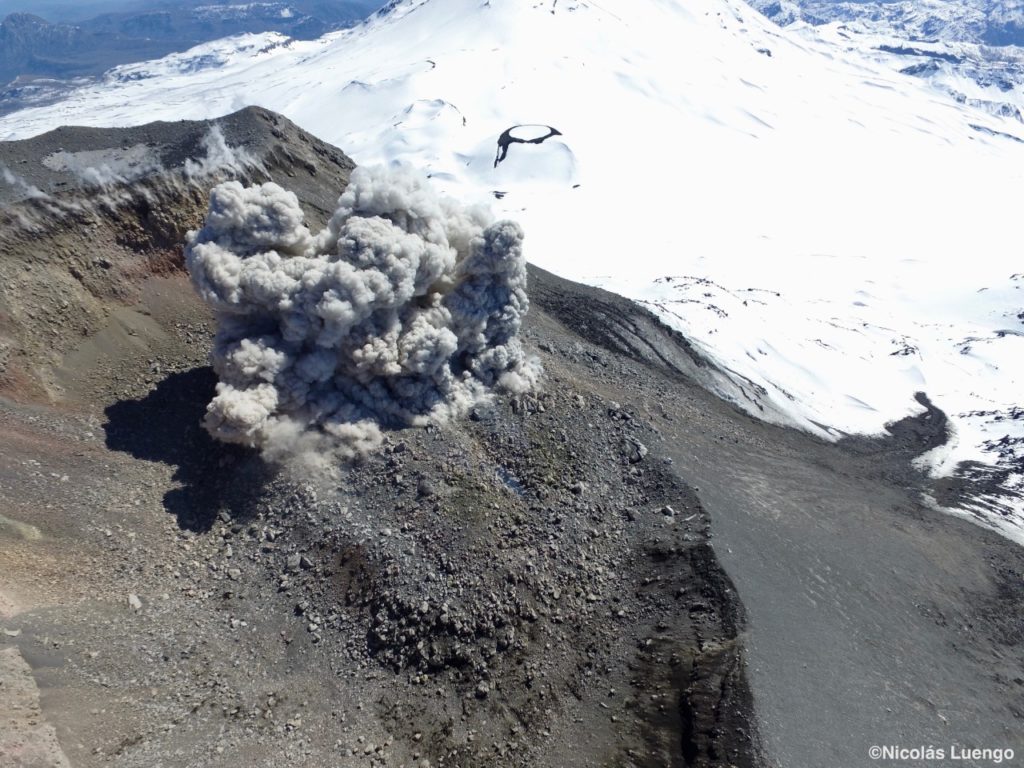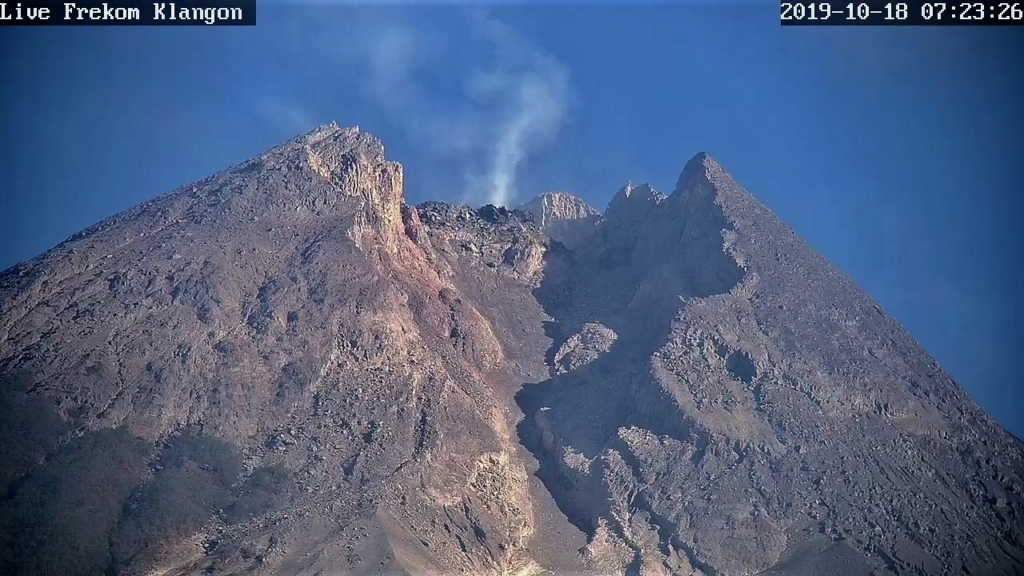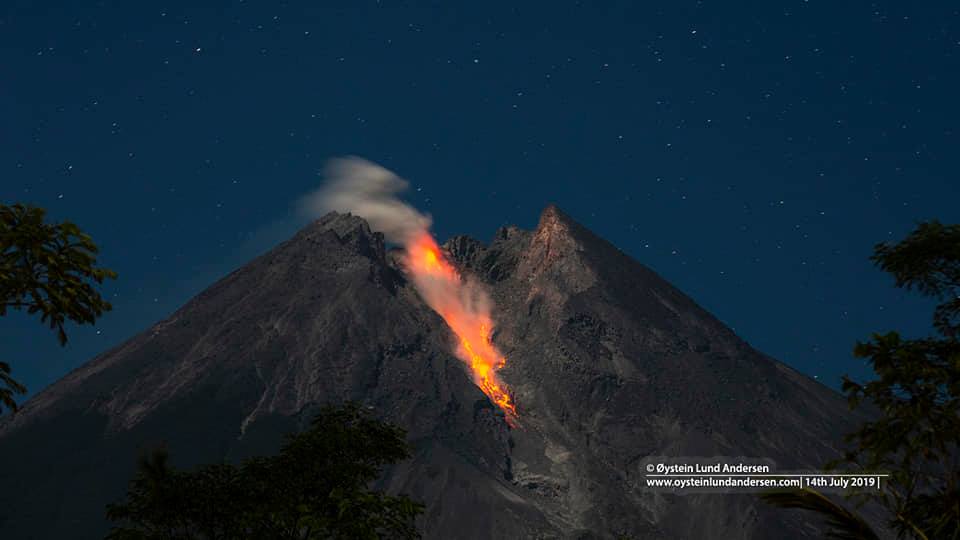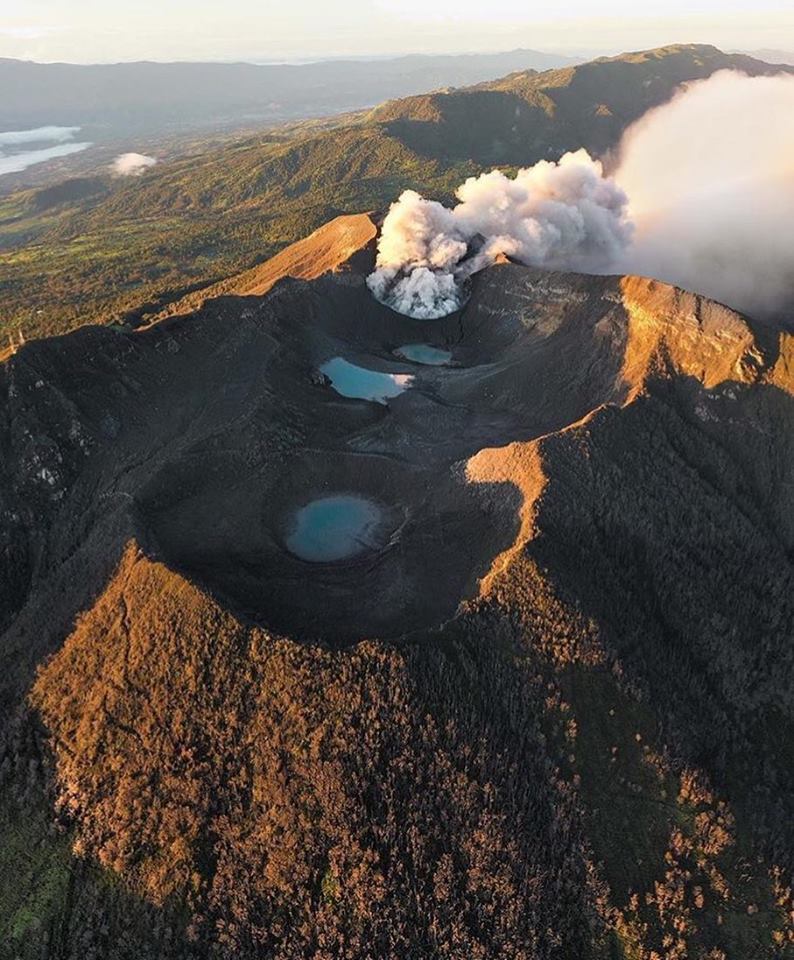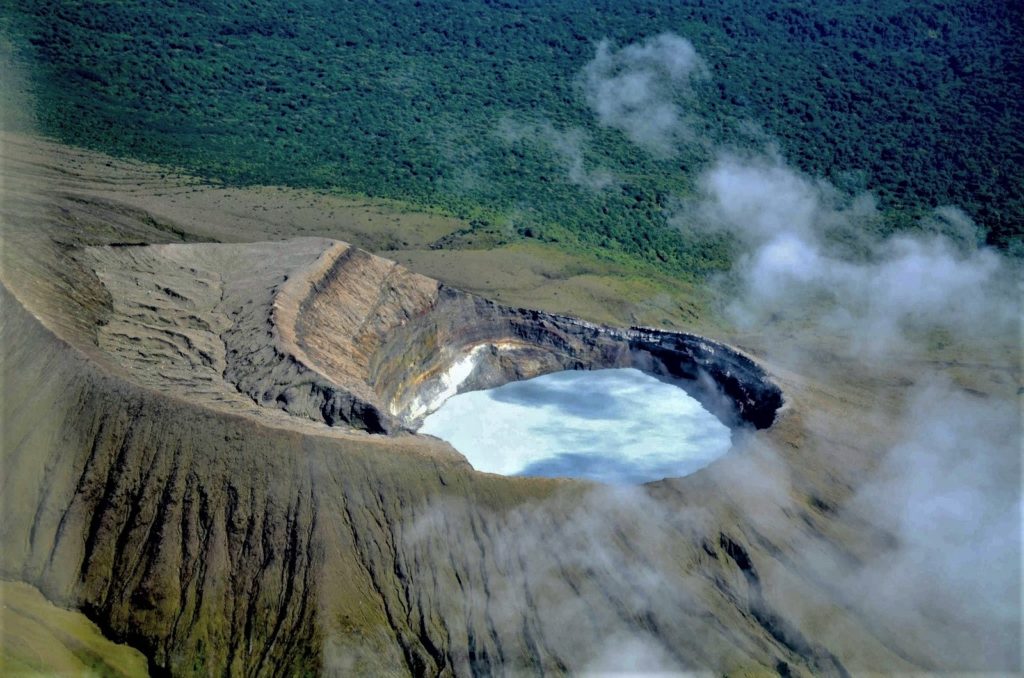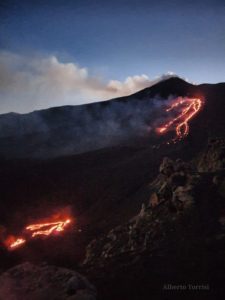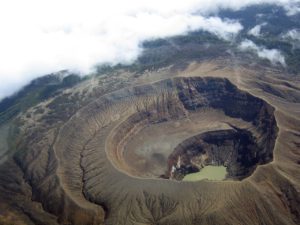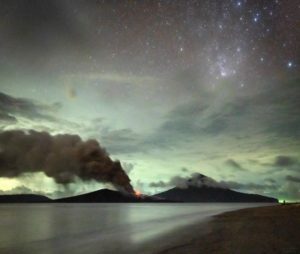March 08 , 2020.
Chile , Nevados de Chillan :
Special volcanic activity report (REAV), region of the Nevados de Chillán volcanic complex, on March 5, 2020 at 11 a.m. local time (mainland Chile).
The National Geological and Mining Service of Chile (Sernageomin) informs through its department of the National Volcanic Surveillance Network (RNVV), and its unit of the South Andes Volcanological Observatory (OVDAS):
The current eruptive cycle of the Nevados de Chillán volcanic complex has been characterized by a decrease in sporadic explosive activity, with weaker emanations of gases and fine particles. Since December 14, it is highlighted the low productivity of long-term seismic events and tremors associated with explosions which have decreased considerably. This drop in energy levels added to the permanent deformation rates since August 2019, indicates a different stage in the behavior of the volcano. This suggests the possibility of a remobilization of a magmatic body less enriched in gas, implying a continuous deformation with a low probability of inducing a magmatic ascent which could destabilize the system and cause a major eruption.
According to the analysis of the instrumental data, the most anticipated projected scenario corresponds to the continuity of the minor explosive activity. However, given the instrumental context described in this report and with a lower probability, the evolution of the current eruptive cycle towards explosive events of moderate magnitude is not excluded. The potential impact zone is reduced to a radius of 2km around the active crater.
The volcanic technical alert level is changed to YELLOW.
Source : Sernageomin .
Photo : Nicolas Luengo.
Indonesia , Merapi :
Activity report of the Merapi volcano from February 28 to March 5, 2020.
OBSERVATION RESULTS
Visuals
The weather around Mount Merapi is generally sunny in the morning and at night, while the afternoon until evening is foggy. White smoke, thin, thick with low pressure is recorded. A maximum smoke height of 150 m was observed from the Mount Merapi observation post in Ngepos on March 5, 2020 at 6:20 a.m. WIB.
On March 3, 2020, at 5:22 a.m., an eruption was noted with a smoke column height of 6 km. The eruption was recorded on a seismogram with an amplitude of 75 mm and a duration of 450 seconds. Hot avalanches were observed up to <2 km in the South-South-East sector. Ash falls occurred within a 10 km radius around the summit towards the Northeast sector.
Morphological analysis of the peak and crater this week could not be performed due to the foggy prevailing weather. The volume of the lava dome based on measurements using aerial photography with drones on February 19, 2020 amounted to 291,000 m3.
Seismicity:
This week, the seismicity of Mount Merapi recorded:
1 rash.
20 emission earthquakes (DG),
1 volcanic earthquake (VTA),
43 multi-phase earthquakes (MP),
58 avalanche earthquakes (RF),
20 low frequency (LF) earthquakes
13 tectonic earthquakes (TT).
The earthquake intensity this week was higher than last week.
Deformation:
The deformation of G. Merapi which was monitored by EDM and GPS this week did not show any significant change.
Rain and lahars:
This week, there was rain at the Mount Merapi observation post with the highest rain intensity of 40 mm / hour for 55 minutes at the Kaliurang post on March 1, 2020. There was no rain. neither lahars nor additional flow in the rivers that descend from Mount Merapi.
Conclusion:
Based on the results of the visual and instrumental observations, it was concluded that:
1. The lava dome is currently in a stable state.
2. The volcanic activity of Mount Merapi is still quite high and is determined by the « WASPADA » level.
3. The current potential danger is in the form of hot clouds from the collapse of the lava dome and emissions of volcanic materials resulting from explosive eruptions.
Source : PVMBG.
Photos : Live Frekom Klangon , Oystein Lund Andersen.
Mexico , Popocatepetl :
March 07, 11:15 a.m. (March 07, 5:15 p.m. GMT).
According to the monitoring systems of the Popocatépetl volcano, 189 exhalations have been identified, some of these events have been accompanied by the emission of gases and light amounts of ash. 215 minutes of tremors were also recorded as well as three minor explosions, which were recorded yesterday at 7:30 p.m., 9:20 p.m. and today at 7:23 a.m.
Since this morning and until the time of this report, emissions of volcanic gases and slight amounts of ash have been present which are dispersed towards the North-East.
CENAPRED urges NOT to APPROACH the volcano and especially the crater, because of the danger of falling ballistic fragments and, in the event of heavy rain, to stay far from the bottom of the ravines because of the danger of mudslides and debris
The Popocatépetl volcanic signaling light is in YELLOW PHASE 2.
Source : Cenapred .
Photo : Webcamdemexico.
Costa Rica , Turrialba / Poas / Rincon de la Vieja :
Volcanic Monitoring Program Weekly Bulletin March 2, 2020
Turrialba volcano:
Lat: 10.025 ° N; Long: 83.767 ° W;
Altitude: 3340 m
Current activity level: 2 (active volcano)
Potentially associated hazards: gas, emission of ash, proximal ballistic emissions.
No ash emission was detected. Seismicity shows a stable number of LP type events. The volcanic building exhibits deflation. The CO 2 / SO 2 and H 2 S / SO 2 ratios remain stable and the flow of SO 2 is kept low (<300 t / d). At the time of this report, the winds were blowing west.
The activity of the Turrialba volcano remains very stable. There were no eruptions. Frequent low frequency (LP) volcanic earthquakes are shown in the seismic records and no tremor is recorded. The concentration of SO2 magmatic gas is maintained with values lower than 7 parts per million, while the ratio between the concentrations of CO2 / SO2 gas registers a slight increase. There is no significant deformation of the volcanic building.
Poás Volcano:
Lat: 10.2 ° N; Long: 84.233 ° W;
Altitude: 2780 m
Current activity level: 3 (active volcano)
Potentially associated hazards: gas, ash emission, phreatic eruptions, proximal ballistic emissions.
On March 2, it was possible to observe the sporadic gas release from the Boca A volcano, which formed on September 30, 2019. The seismic activity maintains a pattern of variations in the number of LPs type events . VTs type events were recorded, as well as a daily tremor. Inflation continues slightly without reaching significant values. The CO 2 / SO 2 and H 2 S / SO 2 ratios continue to fluctuate without reaching a critical value. Conditions did not allow many SO 2 flow measurements, but normal values were measured (approximately 300 t / d). Higher SO 2 concentrations were measured at the point of view on February 25 and early March. At the time of this report, the winds were blowing southwest. No volcanic eruption is recorded. Seismic records show an increase in low-frequency (LP) volcanic earthquakes, both in magnitude and number, some episodes of short-lived volcanic tremors are recorded, but no prolonged volcanic tremor is recorded. The concentrations of magmatic gases remain very low. The deformation of the volcanic building continues to show slight inflation. The level of the acid lagoon is slowly decreasing due to evaporation.
Rincon de la Vieja volcano:
Lat: 10.83 ° N; Long: 85.324 ° W;
Altitude: 1895 m
Current activity level: 3 (volcanic eruption)
Potentially associated hazards: gas, phreatic eruptions, proximal ballistic emissions, lahars.
2 eruptions were detected, one on February 24 and another on February 25, of very small amplitude. A continuous tremor has been maintained which overlaps a discontinuous tremor of variable frequency. The volcano does not show significant deformation.
Source : Ovsicori.
Photos : jcarvaja17 , RSN , Federico Chavarría-Kopper / Ovsicori .


